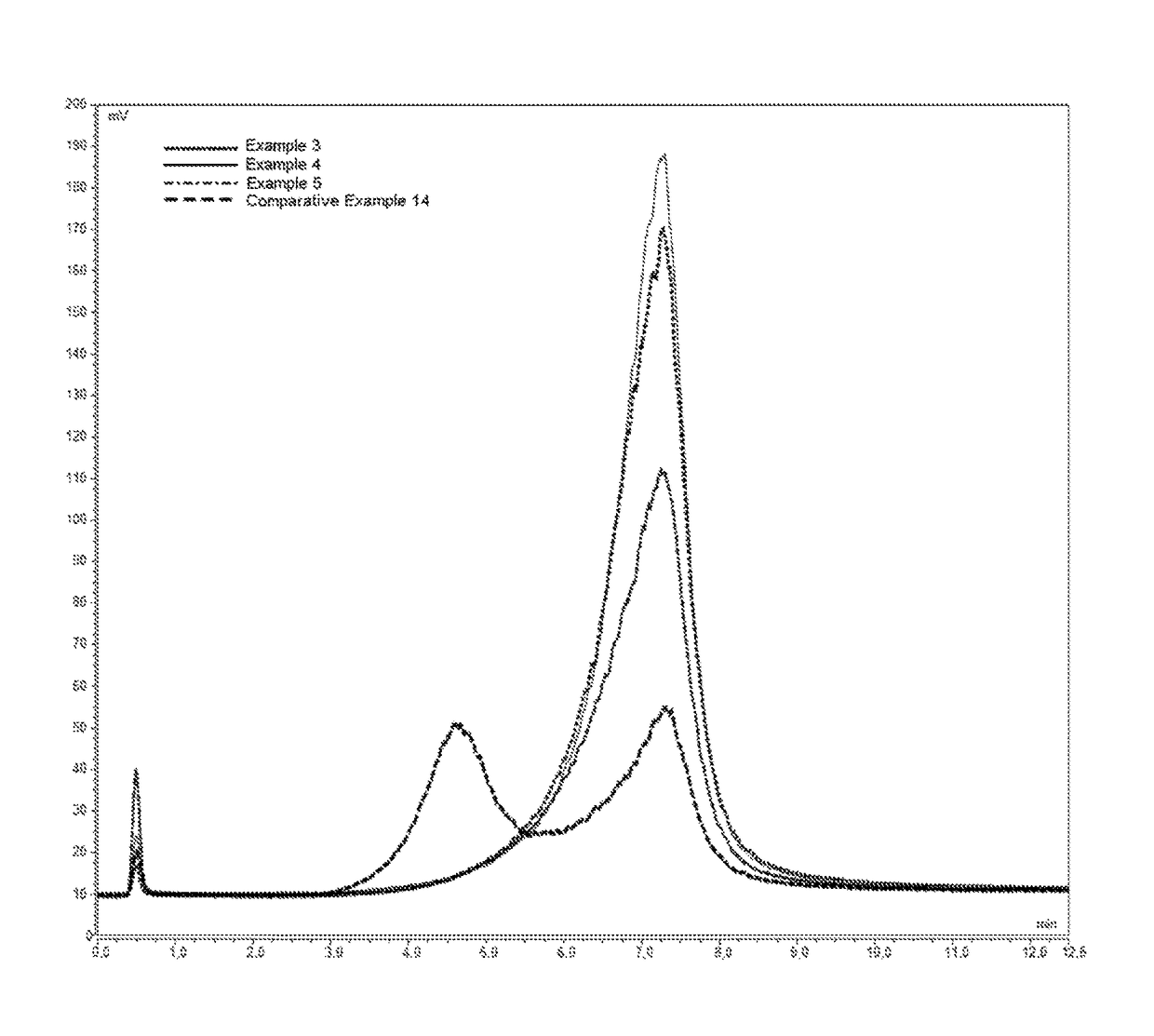Method for producing polyvinyl alcohol
a polyvinyl alcohol and polyvinyl alcohol technology, applied in the field of polyvinyl alcohol production methods, can solve the problems of large amount of solvent, large amount of saponification, and difficulty in producing solid polyvinyl alcohol by this method, and achieve the effect of different degrees of saponification and viscosity
- Summary
- Abstract
- Description
- Claims
- Application Information
AI Technical Summary
Benefits of technology
Problems solved by technology
Method used
Image
Examples
example 1
[0076]Polyvinyl acetate (Höppler viscosity: 4.2 mPa·s) in the form of a methanolic solution was fed continuously at room temperature by means of a metering pump into the above-described extruder via the intake nozzle of the first intake zone (1st zone).
[0077]A 5% by weight methanolic sodium hydroxide solution was metered in continuously via the second intake zone (2nd zone) in such a manner that the amount of sodium hydroxide used, based on the dry weight of the polyvinyl acetate used, was 1.9% by weight.
[0078]A 30% by weight solution of acetic acid in methyl acetate was continuously metered into the 5th zone by means of a metering pump. The amount was so chosen that a 10% molar excess of acetic acid was achieved, based on the sodium hydroxide used.
[0079]The second intake zone (2nd zone) was adjusted to a temperature of 25° C. Cylinders 3 to 13 (3rd to 7th zone) were adjusted to a temperature of 65° C.
[0080]The speed of rotation of the screws was 300 rpm.
[0081]A polyvinyl alcohol ha...
example 2
[0082]A static mixer from Fluitec having mixing elements of type CSE-X was connected as a mixing unit upstream of the extruder described at the beginning. Polyvinyl acetate (Höppler viscosity: 4.2 mPa·s) in the form of a methanolic solution was introduced into the static mixer via a metering pump, and a 5% by weight methanolic sodium hydroxide solution was introduced via a Fluitec injection point. The amount of sodium hydroxide used was 1.9% by weight, based on the dry weight of the polyvinyl acetate used. A methanolic premixture of polyvinyl acetate and sodium hydroxide was produced continuously by means of the mixing unit.
[0083]The premixture was fed continuously into the second intake zone (2nd zone) of the extruder at room temperature by means of a metering pump.
[0084]Cylinders 3 to 13 (3rd to 7th zone) were adjusted to a temperature of 60° C.
[0085]The speed of rotation of the screws was 200 rpm.
[0086]Acetic acid was added as described in Example 1.
[0087]A polyvinyl alcohol havi...
example 3
[0088]The procedure was analogous to Example 2, with the following differences: the temperature in cylinders 3 to 13 (3rd to 7th zone) was 55° C., and the speed of rotation of the screws was reduced to 100 rpm.
[0089]A polyvinyl alcohol having a degree of hydrolysis of 89.2 mol. % and a Höppler viscosity of 3.8 mPa·s was obtained.
PUM
| Property | Measurement | Unit |
|---|---|---|
| temperature | aaaaa | aaaaa |
| viscosity | aaaaa | aaaaa |
| viscosity | aaaaa | aaaaa |
Abstract
Description
Claims
Application Information
 Login to View More
Login to View More - R&D
- Intellectual Property
- Life Sciences
- Materials
- Tech Scout
- Unparalleled Data Quality
- Higher Quality Content
- 60% Fewer Hallucinations
Browse by: Latest US Patents, China's latest patents, Technical Efficacy Thesaurus, Application Domain, Technology Topic, Popular Technical Reports.
© 2025 PatSnap. All rights reserved.Legal|Privacy policy|Modern Slavery Act Transparency Statement|Sitemap|About US| Contact US: help@patsnap.com

